Champions Pointe opened its doors in 2007 just north of Jeffersonville, Indiana. Champions Pointe was a failed development that Fuzzy Zoeller and Clyde Johnston happened upon, took what already existed, including some ponds the prior developer had created, and worked it into a solid routing that provides some challenging and fun golf. As with Covered Bridge, there is gentle rolling terrain that shapes almost every hole and makes for a nice walk on a beautiful weekend afternoon. Fortunately, there is not an abundance of trees on site which allows for some excellent views of the surrounding terrain. Champions Pointe has grown in nicely since opening and is maintained at the same level as all other Zoeller designs, nearly immaculate conditions. The course is almost flawless from a conditioning perspective. It is also maintained as one would expect for a tournament style design regardless of when you venture onto the property.
Another unique facet of the conditioning program is the ability to conceal the actual width of the playing alleys by making them seem narrower than their true size. This speaks volumes about Johnston’s ability to use the scale of the site to provide some mental obstacles and visual deception for the golfer to battle along with the physical hazards. The deceptively wide fairways often allow for the ideal angle of approach to be used on any hole around the course.
The 1st tee

The hazards at Champions Pointe are well placed throughout the course. Bunkering around the course is often in play but actually used sparsely with the total number of bunkers only reaching 46 on the entire course, a small number for a modern design. Water hazards come into play on eight holes. As with many of Johnston’s designs the water is laid out on the periphery of the hole with only a couple mandatory carries from the tee. The water hazards add an element of beauty to the course and enhance the strategic design elements put in place by the designer.
The greens at Champions Pointe are also part of the challenge, alternating throughout the course between excellent two-level greens and to a style that gradually tilts towards one corner of the putting surface. For a little variety, Johnston also put together a three-level demon on the second hole. This is just a suggestion, but play below the hole on this one.
2nd green
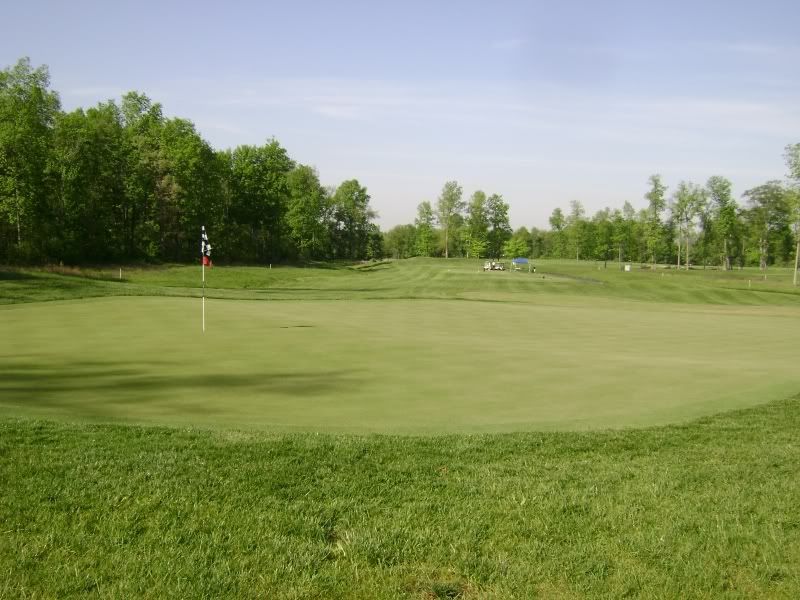
Holes of note:
Hole 4 - 200 yards - As is typical with Johnston, he opens the course in a subtle fashion with a calm set of holes. The course then gives a piece of harsh reality with the toughest par three on the layout. At 200 yards the player must try to hit a green with water and sand directly in line with the tee. But there is relief to both sides of the green in the form of fairway and chipping area. The green also features a higher right side that creates an additional degree of difficulty for any pin locations on that smaller portion of the green.
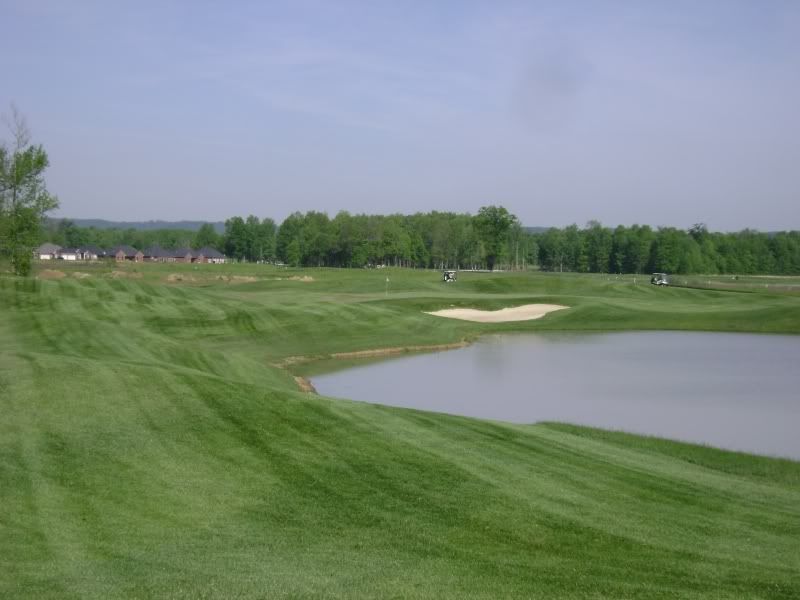
Hole 6 – 506 yards – The best par five on the front side. It is laid out nicely from the tee, but the second shot is where the hole is made. The green is tightly guarded short with two bunkers pinching the fairway. The putting surface is also very solid as it has two tiers and a nice spin splitting the front half.
Hole 7 – 430 yards – A tough hole with a split fairway. The key though is to refuse the challenge to go left and cut the distance somewhat. The right side has a much better angle into the green.
7th tee
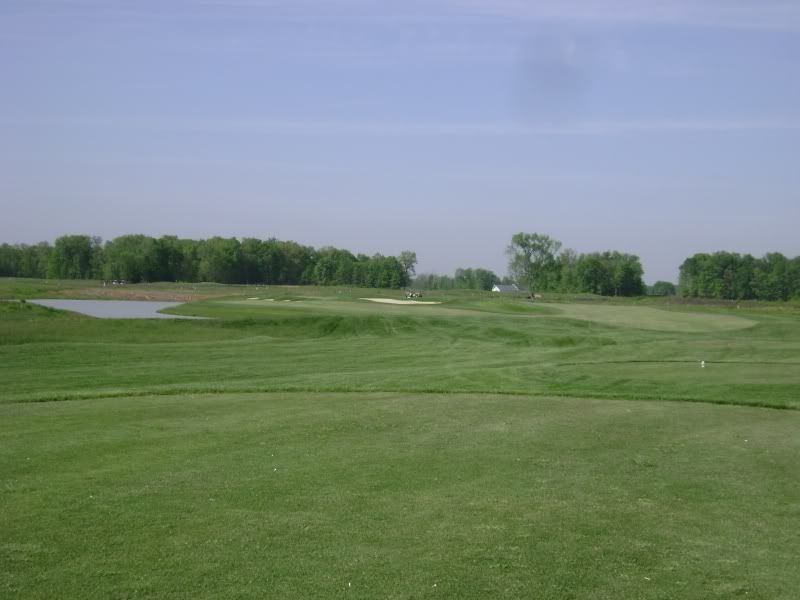
Hole 8 – 421 yards - Seemingly, a familiar design element for Johnston is to run water all along one side of a hole and have the strategic elements reward someone for going on the opposite side. The eighth is such a hole as the player that skims the right side of the hole and near the fairway bunker has a clear advantage. The well protected green is angled to reward a shot that comes from this side.
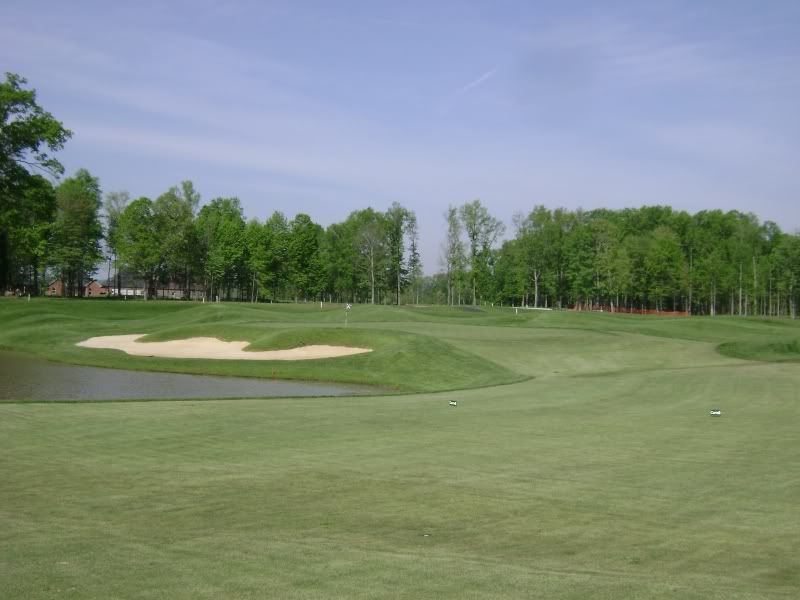
Hole 9 – 433 yards – A fine finish to this difficult stretch. The best hole on the front nine is the closer. The hole runs uphill in a dogleg fashion around a cluster of bunkers at the corner. These bunkers run quite a bit down the right side of the fairway thus increasing the danger the further the players to wishes to play from the tee. The approach then runs into a green that that is perched atop a plateau and gives a skyline look to the target. The green caps it off nicely with more than enough contour for any player’s game.
Bunkers on right side of hole
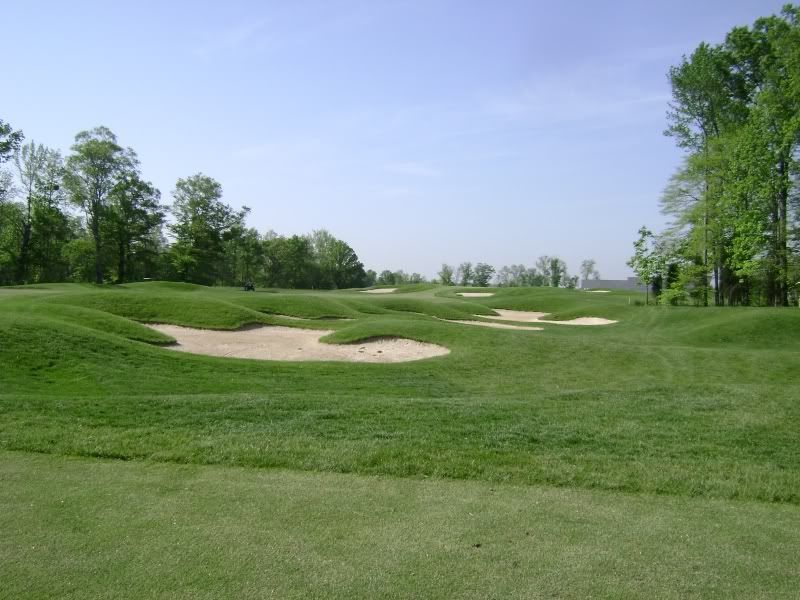
Approach into green
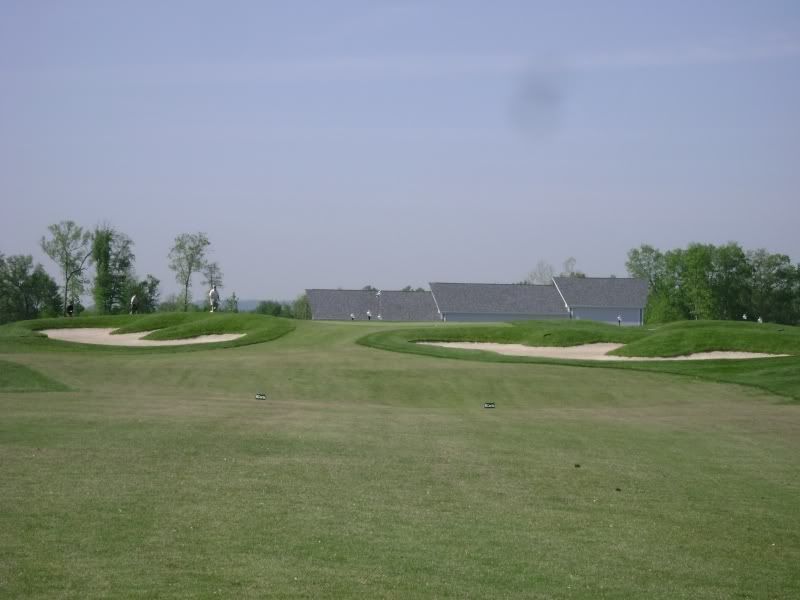
Back nine on second post